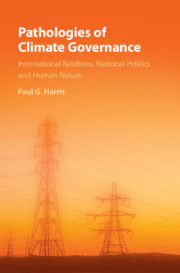Book contents
- Pathologies of Climate Governance
- Pathologies of Climate Governance
- Copyright page
- Contents
- Acknowledgements
- Figures and Tables
- Abbreviations and Acronyms
- Part I Problems
- Part II Pathologies
- 3 Pathologies of International Relations
- 4 Pathologies of National Politics in the United States and China
- 5 Pathologies of National Politics in the Global North
- 6 Pathologies of National Politics in the Global South
- 7 Pathologies of Human Nature
- Part III Prescriptions
- References
- Index
4 - Pathologies of National Politics in the United States and China
from Part II - Pathologies
Published online by Cambridge University Press: 27 February 2021
- Pathologies of Climate Governance
- Pathologies of Climate Governance
- Copyright page
- Contents
- Acknowledgements
- Figures and Tables
- Abbreviations and Acronyms
- Part I Problems
- Part II Pathologies
- 3 Pathologies of International Relations
- 4 Pathologies of National Politics in the United States and China
- 5 Pathologies of National Politics in the Global North
- 6 Pathologies of National Politics in the Global South
- 7 Pathologies of Human Nature
- Part III Prescriptions
- References
- Index
Summary
National politics will determine which interests are given priority in climate governance. More often than not, climate action never makes it to the top of the list of governments’ priorities, and at the very least that action is watered down. For most countries, climate governance is very largely a function of domestic political considerations. This chapter describes how the pathologies of national politics have manifested themselves in the United States and China. These two countries are examined in some detail here because they are the largest national sources of greenhouse gas pollution, together accounting for about 40 percent of the global total. These countries’ experiences tell us much of what we need to know about the pathologies of national politics and how those pathologies interact with the pathologies of international relations. They demonstrate the degree to which the pathologies of national politics have infected climate governance around the world. In both countries, there have been some efforts to govern climate change, but vastly less than what the science demands, and indeed far short of what other countries have demanded.
Keywords
- Type
- Chapter
- Information
- Pathologies of Climate GovernanceInternational Relations, National Politics and Human Nature, pp. 60 - 80Publisher: Cambridge University PressPrint publication year: 2021

